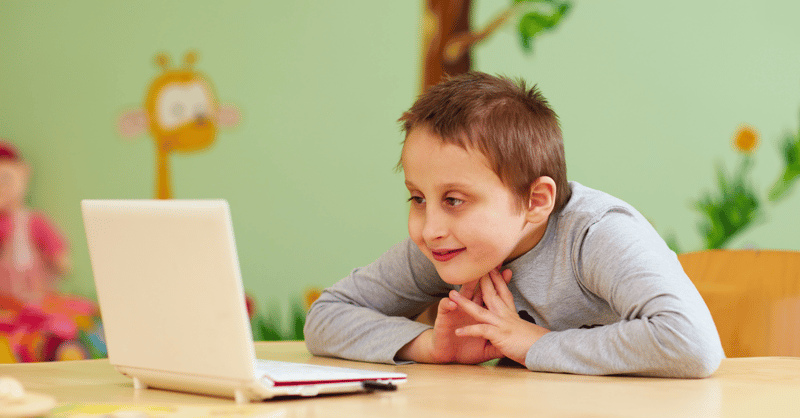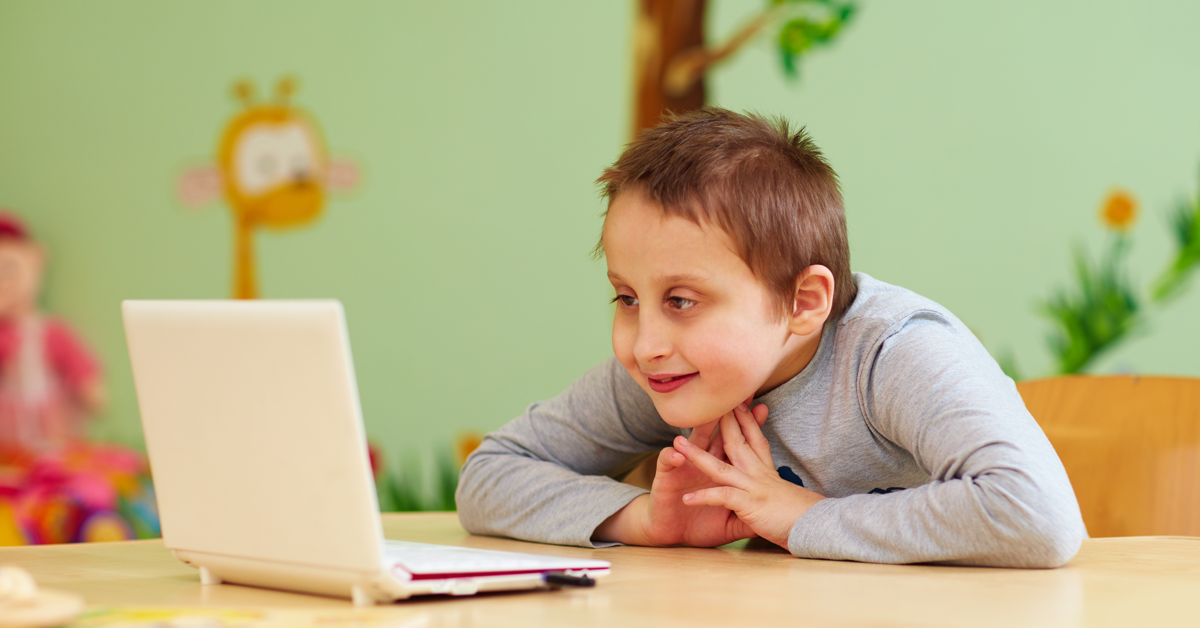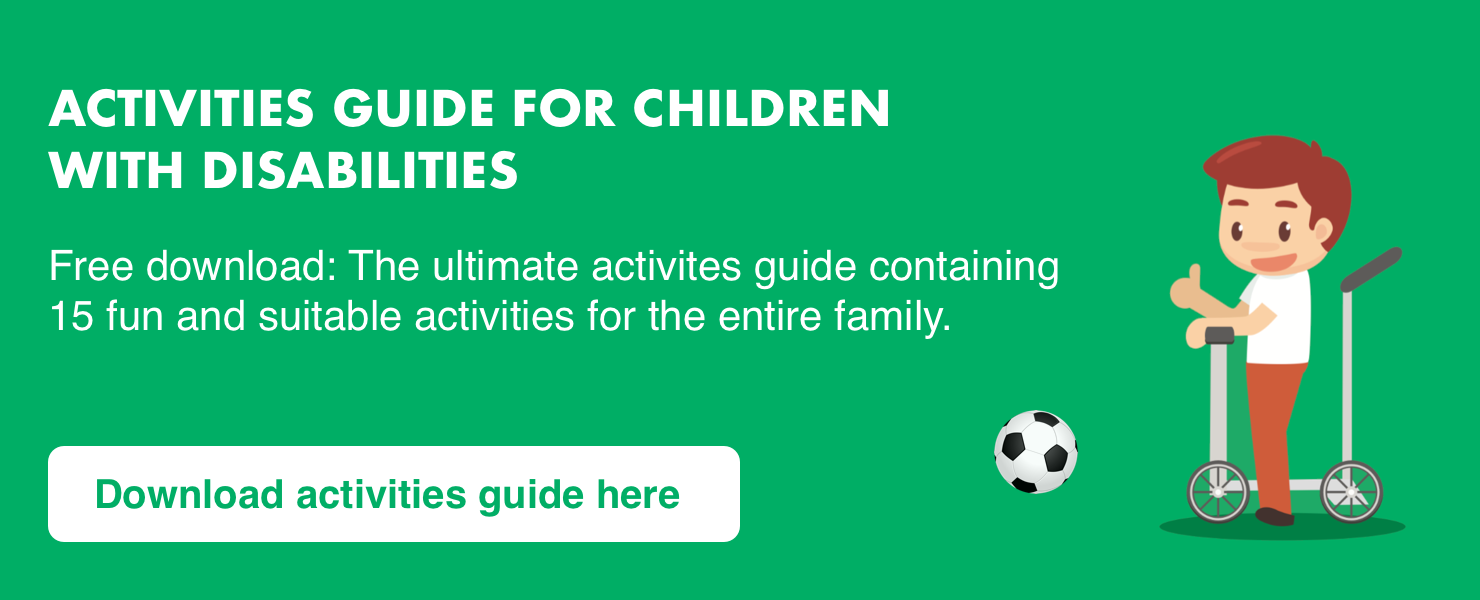
Lately, there’s been a huge influx of innovative solutions enabling people with disabilities to live more independent lives. In this article, we’ve picked seven technologies and products that we think may be helpful.

1. AV1 – the telepresence robot
AV1 is a Norwegian telepresence robot, developed specifically for children and young adults. The robot helps users participate in class and maintain contact with friends from their own home or hospital bed. By placing the robot in class or among friends, the user can watch, communicate and participate through the robot by using a tablet or phone app.
The goal with AV1 is to prevent children with long term illnesses or disabilities from experiencing long periods with isolation, as well as making the transition back to school easier by keeping in touch with classmates online.
AV1 is developed by No Isolation in collaboration with the Norwegian Cancer Society, the University of Oslo, and Sunnaas and St. Olavs Hospital. You can find more information about AV1 at No Isolation’s product page.
2. Liftware Level, the utensil that makes eating easier
Liftware Level is a utensil that adapts to the user’s range of motion. According to Liftware, it makes use of electronic motion-stabilizing technology to keep the utensil levelled, regardless of hand or arm twists, bends, or moves.
The device is designed for people with limited hand and arm mobility, often related to disabilities such as cerebral palsy.
It’s got multiple attachments, so you can use the utensil as a spoon or a fork, and a rechargeable battery that lasts for approximately one hour of use.
SEE ALSO: 5 reliable websites for parents of children with cerebral palsy
3. LipSync, the joystick cursor
LipSync allows people who are unable to move their hands to use a touchscreen device. The user controls the cursor on their preferred device by using a mouth-operated joystick.
According to the producer Neil Squire Society, the joystick requires a minimum of head and neck movement, and has no additional control boxes or technology other than the joystick itself, making it ideal for wheelchair-mounted applications.
LipSync is funded by Google and even won the 2017 “Most Disruptive Technology” Award for the effort and contribution to the field of assistive technology and rehabilitation. The technology is open source, meaning the only cost for the user comes through the manufacturing of the joystick itself. This makes LipSync significantly cheaper than other options available today.
SEE ALSO: 5 fun winter activities for children with cerebral palsy
4. Control your Android device with the Open Sesame! app
Similar to LipSync, this app allows people to control their Android tablet or phone. However, Open Sesame! utilizes head movements to let users control their devices.
The app uses the device’s front facing camera and advanced algorithms to read head movements. Moving their heads, users can control a cursor on the screen, and perform actions by hovering over action buttons.
It’s an application that makes mobile devices 100% touch free, and enables anyone to post to Facebook or send instant messages. Open Sesame! is available to download from Google Play.
5. Get a personal maid in iRobot
If you have difficulties moving around, it can be quite hard to do things such as using a vacuum cleaner.
iRobot delivers several vacuum robots that move through your home by using intelligent sensors. This allows anyone to have a clean home, and reduces the need for external cleaning help.
It’s even got its own dedicated app for Android and Apple mobile devices, where you can control and select preferences and review cleaning data so you know exactly what’s been cleaned. Easy and efficient.
SEE ALSO: How to adapt your home for a child with disabilities
6.This wearable translates brain waves to data
Wearables, such as Apple Watch and Google Glasses, have featured quite often in the media the last couple of years.
EMOTIV are pushing wearables even further with the Insight Brainwear headset. This wireless headset records the user’s brainwaves and translates them into meaningful data, which is quite an astonishing thing.
The goal is for users to be able to control wheelchairs or create music with nothing but their thoughts. If EMOTIV are successful bringing their headset to the mass market, it will be a massive step forward for people with difficulties using technology that requires hand or head movements.
As the wearable is relatively new, there is a lack of software available, which currently limits its use. However, the potential seems to be huge, and it will be quite interesting to follow the development in this space in the coming years.
Emotiv Insight Kickstarter Campaign from Aaron Fagerstrom on Vimeo.
7. Better communication with electronic PODD
Pragmatic Organisation Dynamic Display (PODD) is a communication tool developed in Australia. It allows people with complex communication needs to communicate with others by selecting and organising symbols.
PODD has been around since 1993, so it’s by no means a new tool. However, PODD has for the most part been available as a flip book, but it’s now possible to use the communication tool on electronic devices.
This has several advantages. Firstly, it’s easy to add new words and change the setup in an electronic PODD, removing the need to re-organize and print new pages. Secondly, as the tool is used on electronic devices and tablets, it’s easy and convenient to bring to school or work. What’s more, an electronic PODD tool has more features than the former flip book version, meaning you can easily add buttons and change keyboards. 

The author worked as Head of Marketing for Made for Movement for 7 years before she pursued other adventures in her own company. Trine Roald has over 20 years of international experience within a variety of industries. As Head of Marketing for Made for Movement she was passionate about communicating stories and know-how featuring possibilities for improving the quality of life among people with severe disabilities.
In this blog, we delve into universal design to help you understand and recognise how its principles, when implemented, can foster...
A disability entails the loss of, damage to, or deviation from bodily or psychological functions, in the form of mental, physical,...
Epilepsy is a serious neurological brain disorder that causes recurring seizures and is common in children with cerebral palsy. There...
Hear from us from time to time and learn new things
